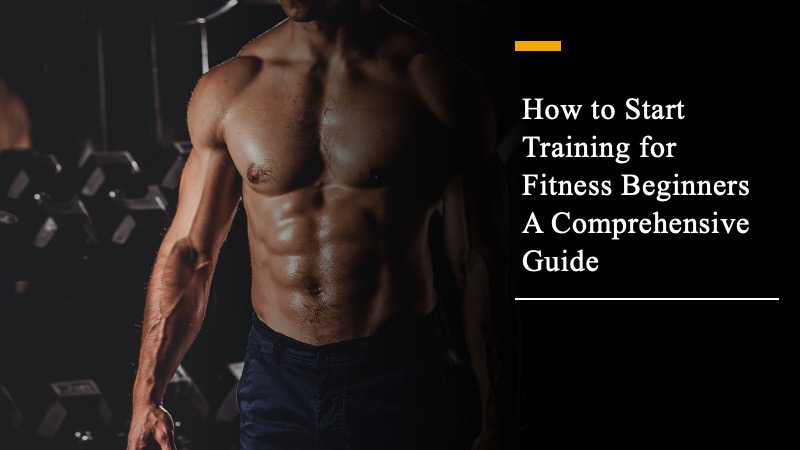
Starting your fitness journey as a beginner can seem daunting, but with the right approach and guidance, you can build a solid foundation for long-term success. Whether your goal is to lose weight, build muscle, or improve overall health, following a structured plan that emphasizes gradual progression, consistency, and safety is key.
Here’s a detailed guide to help you get started:
- Set Clear and Realistic Goals
- Weight loss: Focus on fat-burning exercises and a balanced diet.
- Muscle building: Prioritize strength training with progressive overload.
- Overall fitness: Combine cardio, strength, and flexibility exercises.
2. Learn Basic Exercises
For beginners, mastering basic movements is essential to ensure proper form and prevent injury. Start with a full-body routine that targets major muscle groups. The following exercises are a great foundation:
- Squats: Great for strengthening the lower body (quadriceps, hamstrings, glutes).
- Lunges: Improves lower body strength and balance.
- Push-ups: Works the chest, shoulders, and triceps.
- Dumbbell curls: Targets the biceps.
- Planks: Strengthens the core muscles.
3. Start with a Simple Workout Plan
A simple workout plan for beginners should include both strength training and cardio. Here's a sample weekly plan:
Day 1: Full-Body Strength Training
- Squats: 3 sets of 10-12 reps
- Lunges: 3 sets of 8-10 reps (per leg)
- Push-ups: 3 sets of 8-12 reps
- Dumbbell curls: 3 sets of 10-12 reps
- Planks: 3 sets, holding for 20-30 seconds
- 30 minutes of brisk walking, jogging, or cycling
- Light stretching or yoga
Day 5: Cardio
- 20-30 minutes of interval training (e.g., alternating 1 minute of running with 2 minutes of walking)
- Go for a walk, swim, or do some gentle yoga
This plan allows your body to adapt to the new routine while promoting balanced progress across all major fitness areas.
4. Focus on Form and Posture
Proper form is crucial for avoiding injury and ensuring that you are targeting the right muscles. Here are a few tips for maintaining correct posture:
- Squats: Keep your feet shoulder-width apart, push your hips back as if sitting in a chair, and make sure your knees don’t extend past your toes.
- Lunges: Take a long step forward, lower your body until both knees are at 90 degrees, and ensure your front knee doesn’t extend past your toes.
- Push-ups: Keep your body in a straight line from head to heels, lower your body until your chest nearly touches the floor, and push back up.
- Planks: Keep your body straight, engage your core, and avoid arching or sagging your back.
When starting out, use lighter weights or bodyweight exercises to ensure you can maintain proper form. Gradually increase the weight or resistance as you become more comfortable with the movements. Aim to increase either the weight, repetitions, or sets every 1-2 weeks.
6. Incorporate Rest and Recovery
Rest is just as important as exercise. Your muscles need time to recover and grow, so ensure you get at least one rest day between strength training sessions. Incorporate stretching or yoga into your routine to improve flexibility and prevent stiffness.
7. Stay Consistent and Track Your Progress
Consistency is key to seeing results. Stick to your workout plan, and track your progress by noting how much weight you're lifting, how many reps you're doing, and how you feel after each workout. This will help keep you motivated and allow you to adjust your routine as you improve.
8. Nutrition Matters
Pairing exercise with proper nutrition is essential for reaching your fitness goals. Eat a balanced diet that includes:
- Lean proteins (chicken, fish, tofu) for muscle repair
- Whole grains (brown rice, oats) for sustained energy
- Fruits and vegetables for vitamins and minerals
- Healthy fats (avocados, nuts, olive oil) for overall health
Conclusion
As a beginner, it's important to start with simple, full-body workouts that target all major muscle groups. Focus on mastering basic exercises with proper form, progressing gradually, and staying consistent with your workouts. Remember, fitness is a long-term journey, and it’s important to set realistic goals, prioritize rest and recovery, and maintain a balanced diet.
With dedication and patience, you’ll be well on your way to achieving your fitness goals.
窗体顶端
窗体底端